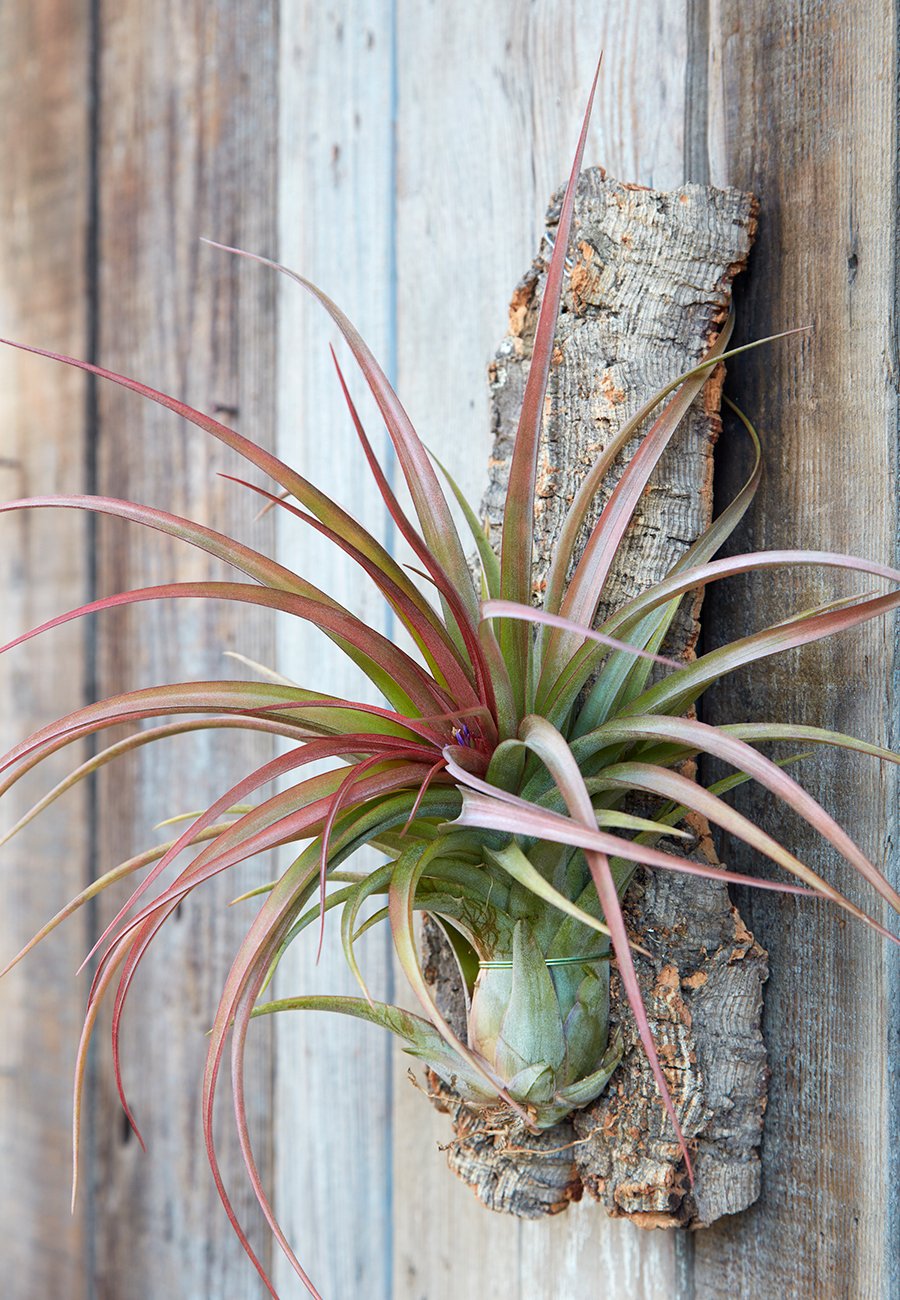The Beauty of Tillandsias
Tillandsias (“air plants”) can thrive where few other plants can, because in nature they live perched on branches and rocks and need no soil. Their soil-less habit is why we call them air plants. Tillandsias’ leaves are covered in little scales that absorb water from dew and rain; roots anchor tillandsias to their host plants, but absorb little or no water. Tillandsias grown in the home cannot survive on air alone. Like other plants, they need water and light, too.
In your home or garden, use tillandsias to create living sculpture, vertical gardens, or miniature living worlds. We always have a large selection of air plants here at the store.
Tillandsias native to drier environments have large, feathery trichomes, all the better to absorb available water. That's what explains the fuzzy look of some of these plants (below)! Varieties native to tropical rainforests and other humid areas have smaller trichomes, so the leaves typically show more of a sheen.
Care and Environment
Indoors, tillandsias prefer bright indirect light. Brief early morning or late afternoon direct sun can be beneficial. The more humidity and cloudiness in your area, the more sun your tillandsia will bear. Varieties that look more silvery, less green, tolerate more sun.
Outdoors in mild climates like San Francisco, tillandsias thrive. The more frost, extended cold rain, and dry heat in your climate, the less likely tillandsias will succeed outdoors.
Just the way tillandsias grow on host plants in nature, you can pair them with garden companions (indoors or out) that require similar care. They make a beautiful accent tucked into pots. These garden shots (above and below) are from the stunning garden of our plant buyer Clarke de Mornay (check him out on Insta @atlasblume).
Watering
Your tillandsia should get wet a minimum of once a week. Some types (silver-colored and fuzzy) will tolerate less water. Dunk them in a water-filled bowl, or wet them under a steady stream of tap water once or twice a week. If you prefer to mist, do so heavily daily or every other day, taking care to moisten the whole plant. You can soak your tillandsias for up to an hour for a deep hydration as needed.
We carry a fertilizer that is specially formulated to be used by plants that do not grow in soil.
Because they don’t require soil, tillandsias lend themselves beautifully to wall gardens and living sculpture of all kinds. Artist and former FGG staffer Zenaida Sengo, who designed the beautiful grid sculpture in the photo below for her home, has a gorgeous book, Air Plants, full of science, care instructions, and design ideas for these special plants. Come get the book and choose your tillandsias at our SF store!
For more of this kind of inspiration, delivered to your inbox, join our mailing list.















